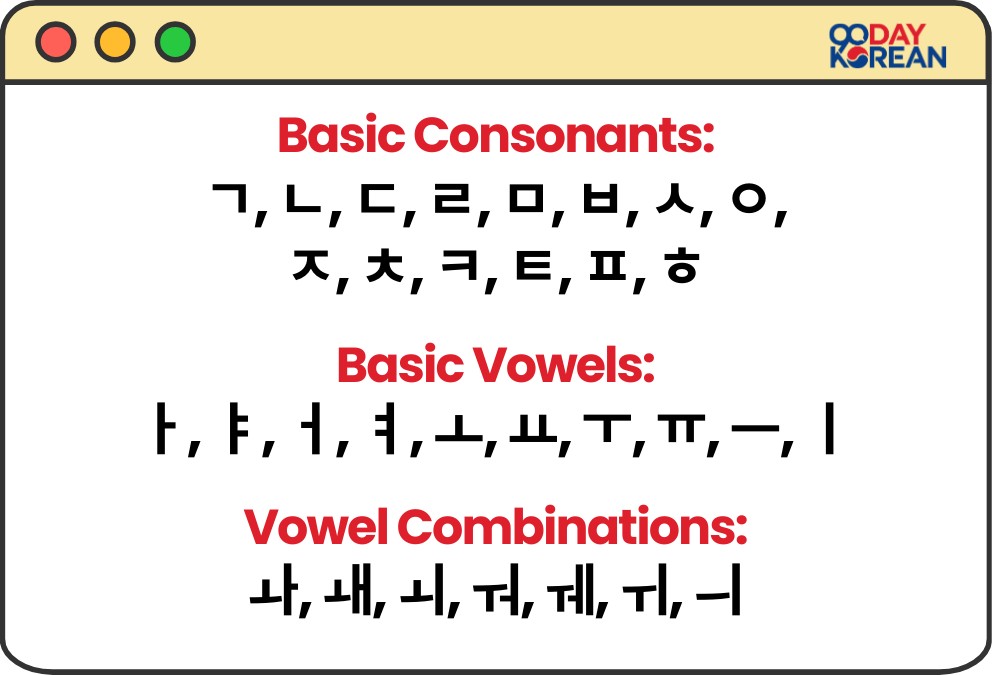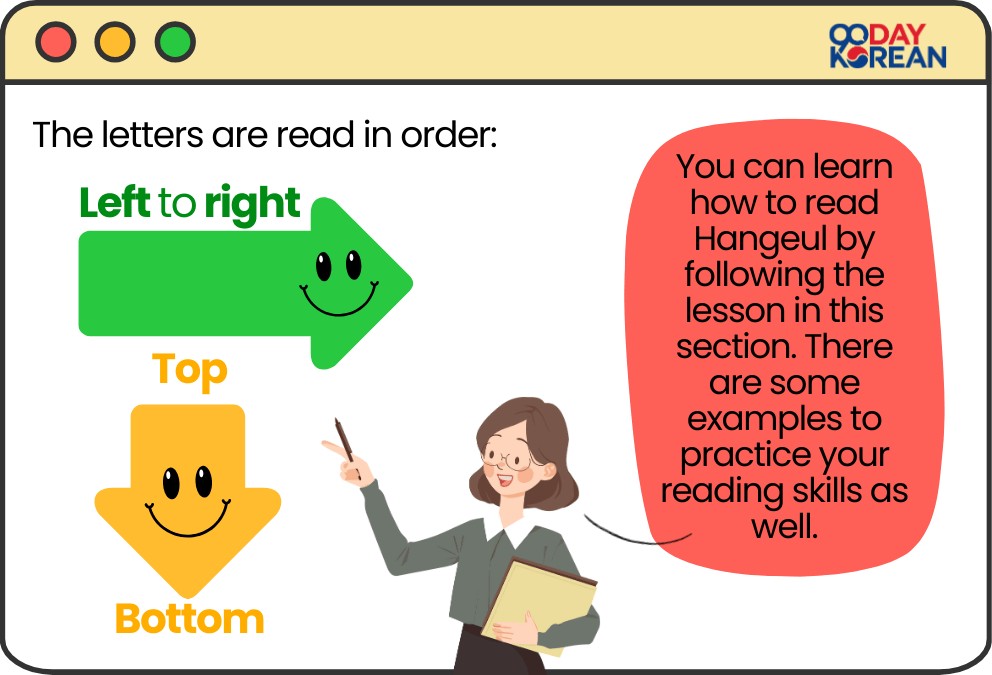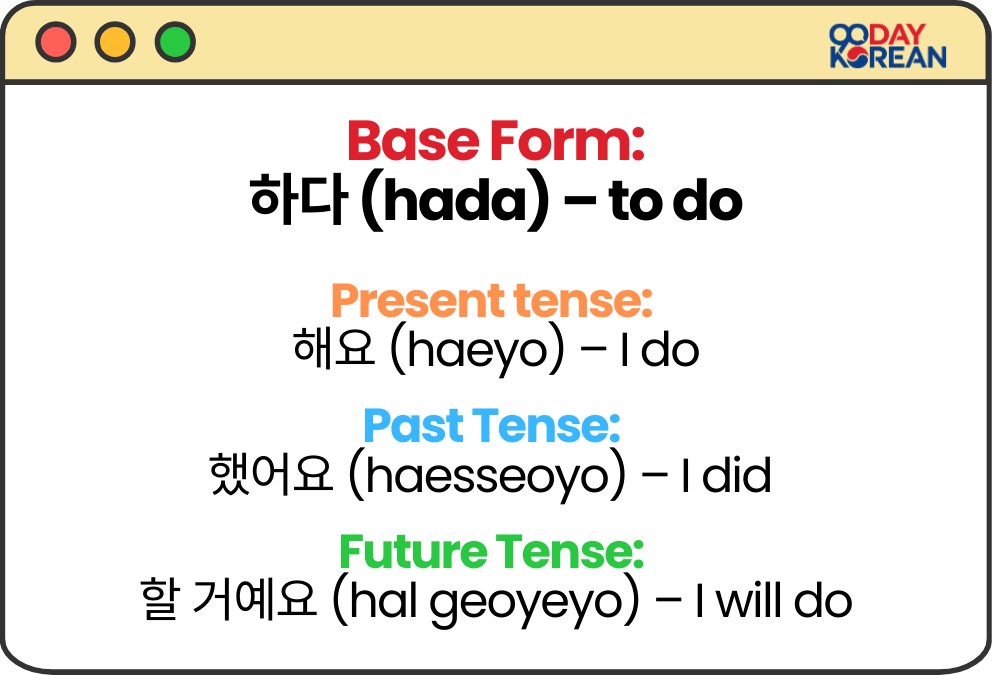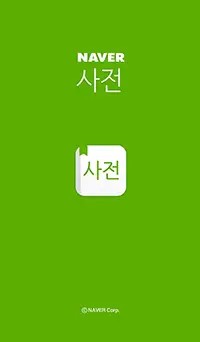Learning how to learn Korean can be an exciting journey, and at LEARNS.EDU.VN, we provide you with the essential tools and resources to make this adventure both effective and enjoyable. Whether you’re aiming to master Korean language basics, understand complex grammar, or simply want to speak confidently, our step-by-step guides and comprehensive lessons are designed to help you achieve your language goals. Explore proven strategies for vocabulary building, conjugation, and pronunciation.
Ready to start speaking Korean fluently? Discover effective language learning techniques and resources, including interactive lessons, pronunciation guides, and cultural insights, with LEARNS.EDU.VN.
1. Laying the Foundation: The Korean Alphabet (Hangeul)
The very first step in your Korean learning journey is mastering Hangeul (한글), the Korean alphabet. Many learners find Hangeul surprisingly straightforward, even if you’re an absolute beginner. It’s designed with simplicity and logic in mind, making it easier to grasp compared to other writing systems.
At LEARNS.EDU.VN, we believe that mastering Hangeul is essential for making progress in learning the Korean language. Spend some time to learn how to read the Korean Alphabet and you’ll learn the Korean language quite quickly.
1.1 Why is Hangeul Important?
Learning Hangeul unlocks the door to accurate pronunciation and reading comprehension. Unlike romanized versions of Korean words, Hangeul provides a precise representation of sounds, which helps you speak more like a native.
Here are a few compelling reasons to prioritize Hangeul:
- Accurate Pronunciation: Hangeul characters directly correspond to specific sounds, reducing ambiguity.
- Faster Reading: Reading Hangeul is faster and more efficient than relying on romanization.
- Deeper Understanding: Recognizing Hangeul helps you understand the structure and meaning of words.
1.2 Tips for Learning Hangeul Effectively
- Start with the Basics: Begin with the basic consonants and vowels. Focus on mastering their shapes and sounds.
- Use Visual Aids: Employ visual associations and mnemonics to remember the characters.
- Practice Regularly: Dedicate time each day to practice reading and writing Hangeul.
- Use Flashcards: Create flashcards with Hangeul characters on one side and their pronunciations on the other.
- Immerse Yourself: Surround yourself with Korean content, such as music, dramas, and websites.
- Online Resources: Websites like LEARNS.EDU.VN provide structured lessons and resources to guide you.
1.3 Understanding Korean Syllables
After learning the individual letters, it’s important to understand how they combine to form syllables. A Korean syllable typically consists of two to four letters, with at least one consonant and one vowel.
Understanding syllable structure is crucial for accurate reading and pronunciation. Remember to read from left to right and top to bottom.
2. Beginner Korean: Essential Building Blocks
Embarking on your Korean learning journey as a beginner can be both exciting and a bit daunting. At LEARNS.EDU.VN, we break down the process into manageable steps, ensuring that you build a strong foundation in the language.
2.1 Key Grammar Points for Beginners
-
이다 (ida): The Verb “To Be”
-
이다 is the Korean equivalent of the English verb “to be.” It is used to describe or identify people and things.
- Example: 저는 학생이에요 (jeoneun haksaengieyo) – I am a student.
-
이다 attaches directly to a noun. The form changes depending on whether the noun ends in a consonant or a vowel.
- If the noun ends in a consonant, use 이에요 (ieyo).
- If the noun ends in a vowel, use 예요 (yeyo).
-
-
있다/없다 (itda/eopda): To Have/To Exist
-
These verbs are essential for expressing possession and existence.
-
있다 (itda) means “to have” or “to exist.”
-
없다 (eopda) means “to not have” or “to not exist.”
-
Example: 저는 책이 있어요 (jeoneun chaegeul isseoyo) – I have a book.
-
Example: 저는 차가 없어요 (jeoneun chaga eopseoyo) – I don’t have a car.
-
-
-
Particles: The Guiding Stars of Korean Sentences
-
Particles are small words that attach to nouns or pronouns to indicate their role in a sentence. Mastering particles is crucial for understanding Korean sentence structure.
-
Subject Particles: 이/가 (i/ga)
-
Used to indicate the subject of a sentence.
-
이 (i) is used when the noun ends in a consonant.
-
가 (ga) is used when the noun ends in a vowel.
-
Example: 책이 좋아요 (chaegeul joayo) – The book is good.
-
-
Object Particles: 을/를 (eul/reul)
-
Used to indicate the object of a sentence.
-
을 (eul) is used when the noun ends in a consonant.
-
를 (reul) is used when the noun ends in a vowel.
-
Example: 저는 밥을 먹어요 (jeoneun babeul meogeoyo) – I eat rice.
-
-
Topic Particles: 은/는 (eun/neun)
-
Used to indicate the topic of a sentence.
-
은 (eun) is used when the noun ends in a consonant.
-
는 (neun) is used when the noun ends in a vowel.
-
Example: 저는요, 학생이에요 (jeoneunyo, haksaengieyo) – As for me, I am a student.
-
-
-
-
Questions: Unlocking Conversations
-
Learning to ask questions is essential for engaging in conversations. Korean questions often use specific question words.
-
어디 (eodi): Where
- Used to ask about location.
- Example: 어디 가세요? (eodi gaseyo?) – Where are you going?
-
언제 (eonje): When
- Used to ask about time.
- Example: 언제 만나요? (eonje mannayo?) – When shall we meet?
-
왜 (wae): Why
- Used to ask about reasons.
- Example: 왜 울어요? (wae ureoyo?) – Why are you crying?
-
-
-
Present Tense: Describing Actions Now
-
Learning to conjugate verbs into the present tense is crucial for describing current actions and states.
-
Korean verbs are conjugated differently depending on the level of formality.
-
The basic present tense ending is -아요/어요 (-ayo/eoyo).
-
아요 (ayo) is used when the verb stem ends in ㅏ or ㅗ.
-
어요 (eoyo) is used when the verb stem ends in any other vowel.
-
Example: 저는 먹어요 (jeoneun meogeoyo) – I eat.
-
Example: 저는 공부해요 (jeoneun gongbuhaeyo) – I study.
-
-
2.2 Beginner Checklist: Your Roadmap to Success
-
Master Hangeul (Korean Alphabet)
- Build a solid foundation by learning to read and write Hangeul. This essential skill will help you navigate Korean words, phrases, and pronunciation effectively.
-
Build Essential Vocabulary
- Start with basic Korean words and phrases, such as greetings, numbers, and days of the week, to confidently handle simple conversations.
-
Learn Basic Grammar
- Understand foundational grammar rules like subject-object-verb (SOV) structure, particles (은/는, 이/가, 을/를), and the verb “to be” (이다). These will be the building blocks for more complex sentences later.
-
Practice Polite Phrases
- Use polite expressions like 안녕하세요 (hello) and 감사합니다 (thank you) to begin interacting respectfully in Korean.
2.3 Essential Vocabulary for Daily Life
| Category | Korean Word | Pronunciation | Meaning |
|---|---|---|---|
| Greetings | 안녕하세요 | annyeonghaseyo | Hello |
| 감사합니다 | gamsahamnida | Thank you | |
| 죄송합니다 | joesonghamnida | I’m sorry | |
| Numbers | 하나 | hana | One |
| 둘 | dul | Two | |
| 셋 | set | Three | |
| Days | 월요일 | woryoil | Monday |
| 화요일 | hwayoil | Tuesday | |
| 수요일 | suyoil | Wednesday | |
| Food | 밥 | bap | Rice |
| 물 | mul | Water | |
| 김치 | gimchi | Kimchi |
2.4 Goals at This Stage
- Master Hangeul: Build a solid foundation by learning to read and write Hangeul. This essential skill will help you navigate Korean words, phrases, and pronunciation effectively.
- Build Essential Vocabulary: Start with basic Korean words and phrases, such as greetings, numbers, and days of the week, to confidently handle simple conversations.
- Learn Basic Grammar: Understand foundational grammar rules like subject-object-verb (SOV) structure, particles (은/는, 이/가, 을/를), and the verb “to be” (이다). These will be the building blocks for more complex sentences later.
- Practice Polite Phrases: Use polite expressions like 안녕하세요 (hello) and 감사합니다 (thank you) to begin interacting respectfully in Korean.
3. Vocabulary Mastery: Building Your Korean Lexicon
Vocabulary is the backbone of any language. The more words you know, the more fluently you can communicate. At LEARNS.EDU.VN, we provide effective strategies to help you expand your Korean vocabulary quickly and efficiently.
3.1 Effective Strategies for Vocabulary Acquisition
-
Associations, Mnemonics, and Stories
-
Creating associations, mnemonics, and stories can help you remember new words more easily. For example, the word for “house” in Korean is 집 (jip). The word sounds like “Jeep,” so you can create a story about a house with a Jeep parked in front.
-
-
Spaced Repetition Systems (SRS)
- SRS tools like Anki are highly effective for vocabulary retention. These systems use algorithms to show you words at increasing intervals, reinforcing your memory.
-
Contextual Learning
- Learn words in context rather than in isolation. Read Korean texts, watch Korean dramas, and listen to Korean music to see how words are used in real-life situations.
-
Flashcards
- Create flashcards with the Korean word on one side and the English definition on the other. Review them regularly.
-
Thematic Learning
- Group words by topic (e.g., food, travel, family) to build a cohesive vocabulary base.
3.2 Hanja (한자): Unlocking Deeper Meaning
Hanja are Chinese characters used in Korean, particularly in academic, legal, and news settings. While most of the Korean language is written in Hangeul, knowing a few basic Hanja can help you understand vocabulary more deeply.
3.2.1 Benefits of Learning Hanja
- Deeper Understanding: Hanja can reveal the etymology and meaning of Korean words.
- Improved Comprehension: Recognizing Hanja can help you guess the meaning of unfamiliar words.
- Cultural Insight: Learning Hanja provides insight into Korean culture and history.
3.2.2 Examples of Hanja in Korean Words
- 학생 (haksaeng) = student → 學 (learn) + 生 (life/person)
- 학교 (hakgyo) = school → 學 (learn) + 校 (school)
3.3 Konglish: Bridging the Gap
Konglish refers to words in Korean that are derived from English (or other languages). These “loan words” can be a helpful starting point for English speakers learning Korean.
3.3.1 Examples of Konglish Words
- 커피 (keopi) = coffee
- 버스 (beoseu) = bus
- 택시 (taeksi) = taxi
3.3.2 Benefits of Learning Konglish
- Familiarity: Konglish words are often recognizable to English speakers.
- Easier Memorization: They provide a bridge to understanding new Korean vocabulary.
- Cultural Insight: Konglish words reflect the influence of Western culture on Korea.
4. Mastering Korean Grammar: Building Coherent Sentences
Grammar is the framework that holds a language together. Understanding Korean grammar is essential for constructing coherent sentences and expressing yourself clearly. At LEARNS.EDU.VN, we offer comprehensive grammar lessons to guide you through the intricacies of the Korean language.
4.1 Essential Grammar Points
-
이다 (ida): The Verb “To Be”
- 이다 is used to identify or describe people and things. It attaches directly to a noun, and the form changes depending on whether the noun ends in a consonant or a vowel.
-
Particles: The Navigational Tools of Korean Sentences
- Particles are small words that attach to nouns to indicate their role in a sentence. Mastering particles is crucial for understanding Korean sentence structure.
-
Verb Conjugation: Adapting Verbs to Context
- Korean verbs change their form (conjugate) to indicate tense, level of formality, and other nuances. Learning verb conjugation is essential for speaking and writing correctly.
-
Sentence Structure: The SOV Order
- Korean follows a subject-object-verb (SOV) sentence structure, which differs from the English SVO order. Understanding this structure is crucial for constructing grammatically correct sentences.
- Example: 저는 밥을 먹어요 (jeoneun babeul meogeoyo) – I rice eat. (I eat rice.)
- Korean follows a subject-object-verb (SOV) sentence structure, which differs from the English SVO order. Understanding this structure is crucial for constructing grammatically correct sentences.
4.2 Beginner-High Korean Grammar
At the beginner-high stage, you’ll begin to dive deeper into Korean grammar. This is where your sentences become more varied and meaningful, and improving grammar helps in enhancing speaking skills.
4.2.1 Key Grammar Points
- Expressing wants with -고 싶어요 (-go sipeoyo)
- Simple past and future tenses
- Irregular verbs
4.2.2 Goals for This Stage
- Expand grammar knowledge
- Improve conversational skills
- Enhance vocabulary
- Develop sentence flow
- Practice daily application
4.3 Korean Conjugation: Mastering Verb Forms
Korean verb conjugation is the process of changing verb endings to indicate tense, level of formality, and other grammatical nuances. Mastering verb conjugation is essential for speaking and writing Korean correctly.
4.3.1 Basic Conjugation Rules
- Present Tense: The most common present tense endings are -아요 (-ayo) and -어요 (-eoyo). Which ending you use depends on the last vowel in the verb stem.
- Past Tense: The past tense endings are -았어요 (-asseoyo) and -었어요 (-eosseoyo). The choice depends on the last vowel in the verb stem.
- Future Tense: The future tense ending is -ㄹ 거예요 (-l geoyeyo). It is used to express intentions or predictions.
4.3.2 Examples of Verb Conjugation
| Verb | Meaning | Present Tense | Past Tense | Future Tense |
|---|---|---|---|---|
| 하다 (hada) | To do | 해요 (haeyo) | 했어요 (haesseoyo) | 할 거예요 (hal geoyeyo) |
| 먹다 (meokda) | To eat | 먹어요 (meogeoyo) | 먹었어요 (meogeosseoyo) | 먹을 거예요 (meogeul geoyeyo) |
| 가다 (gada) | To go | 가요 (gayo) | 갔어요 (gasseoyo) | 갈 거예요 (gal geoyeyo) |
5. Intermediate Korean: Refining Your Skills
Once you’ve grasped the basics, it’s time to move on to intermediate Korean. This stage focuses on expanding your vocabulary, improving your fluency, and mastering more complex grammar.
5.1 Key Grammar Points for Intermediate Learners
-
고 있어요 (-go isseoyo): Expressing Ongoing Actions
- This grammar point is used to describe actions that are currently in progress.
- Example: 저는 밥을 먹고 있어요 (jeoneun babeul meokgo isseoyo) – I am eating rice.
- This grammar point is used to describe actions that are currently in progress.
-
ㄹ/을게요 (-l/eul게요): Making Promises or Decisions
- This is used to express your future plans or decisions, often with a sense of promise or intention.
- Example: 제가 할게요 (jega hal게요) – I will do it.
- This is used to express your future plans or decisions, often with a sense of promise or intention.
-
으려고 (-euryeogo): Expressing Purpose
- This grammar point is used to state the purpose or intention behind an action.
- Example: 공부하려고 도서관에 갔어요 (gongbuharyeogo doseogwane gassoyo) – I went to the library to study.
- This grammar point is used to state the purpose or intention behind an action.
-
Using -(으)면 (conditional “if/when”)
- A versatile structure used to describe conditions or hypothetical situations.
- Example: 비가 오면 집에 있을 거예요 (biga omyeon jibe isseul geoyeyo) – If it rains, I will stay home.
- A versatile structure used to describe conditions or hypothetical situations.
-
Using -으니까 (expressing “because”)
- Widely used in conversations for explaining reasons or making suggestions.
- Example: 배고프니까 밥 먹을까요? (baegopeunikka bap meogeulkkayo?) – Because I am hungry, shall we eat?
- Widely used in conversations for explaining reasons or making suggestions.
5.2 Goals at This Stage
- Expand Vocabulary: Focus on specific topics like travel, food, or hobbies.
- Build Fluency: Practice having conversations that last several minutes.
- Master Honorifics: Learn how to address elders or people in higher positions respectfully.
5.3 The Importance of Honorifics
Korean honorifics are a system of respectful language used to show deference to elders, superiors, and those of higher social standing. Understanding and using honorifics correctly is crucial for polite and effective communication in Korean society.
5.3.1 Key Honorific Forms
- -시- (-si-): This infix is added to verb stems to elevate the level of formality.
- -(으)세요 (-(eu)seyo): This ending is used to make polite requests or commands.
- Special Vocabulary: Certain nouns and verbs have honorific equivalents. For example, the honorific form of “to eat” (먹다 – meokda) is 드시다 (deusida).
5.3.2 Guidelines for Using Honorifics
- Age: Use honorifics when speaking to someone older than you.
- Social Status: Use honorifics when speaking to someone in a higher position than you (e.g., boss, teacher).
- Formality: Use honorifics in formal settings, such as business meetings or public speeches.
6. Speaking Korean: From Theory to Practice
The ultimate goal of learning a language is to speak it fluently. At LEARNS.EDU.VN, we emphasize the importance of practical application and provide strategies to help you start speaking Korean from day one.
6.1 Tips for Improving Your Speaking Skills
-
Start with Simple Conversations
- Don’t be afraid to start speaking, even if you only know a few words and phrases. Practice basic greetings, introductions, and everyday expressions.
-
Find a Language Partner
- A language partner can provide valuable feedback on your pronunciation and grammar. Look for native Korean speakers who are willing to practice with you.
-
Record Yourself Speaking
- Recording yourself can help you identify areas for improvement in your pronunciation and fluency.
-
Immerse Yourself in the Language
- Surround yourself with Korean content as much as possible. Watch Korean dramas, listen to Korean music, and read Korean books.
-
Don’t Be Afraid to Make Mistakes
- Everyone makes mistakes when learning a new language. The important thing is to learn from your mistakes and keep practicing.
6.2 Practical Exercises for Speaking Practice
-
Role-Playing
- Practice common scenarios, such as ordering food at a restaurant, asking for directions, or making a phone call.
-
Describe a Picture
- Choose a picture and describe it in Korean. Focus on using descriptive vocabulary and correct grammar.
-
Retell a Story
- Read a short story in Korean and then retell it in your own words. This will help you improve your fluency and comprehension.
-
Debates
- Find a partner, pick a topic that you both have different opinions, and debate in Korean
7. Intermediate-High Korean: Achieving Fluency and Nuance
At the Intermediate High level, you’ll focus on mastering advanced grammar patterns, further expanding your vocabulary, and enhancing your conversational depth. This stage is about fine-tuning your skills to express more complex ideas naturally and confidently in Korean.
7.1 Key Grammar Points
-
Refine Sentences with 은/는데
- Use this grammar to add context, provide background, or connect ideas.
-
Handle Irregular Verbs with Ease
- Reinforce your understanding of irregular verbs, like those that change stems for smooth pronunciation.
-
Passive Verbs (Passive voice usage and conjugation)
- Fundamental for describing actions happening to the subject, commonly used in daily conversations and formal writing.
-
Using 으면서 (expressing simultaneous actions)
- Useful for describing two actions occurring at the same time, enhancing sentence complexity.
-
Using 았/었으면 좋겠다 (expressing wishes or desires)
- Essential for expressing hopes or wishes politely.
7.2 Goals at This Stage
- Master Complex Sentences: Use 은/는데 to connect ideas and add context to conversations.
- Express Inclusion and Variety: Use 도…도 to talk about multiple activities, objects, or people naturally.
- Fluent Irregular Verb Usage: Confidently conjugate irregular verbs and incorporate them into conversations.
- Speak with Nuance: Improve your ability to handle different sentence structures and express your thoughts in a natural, flowing way.
7.3 Suggested Practice
- Storytelling: Practice narrating past events or explaining situations using 은/는데 for smooth transitions.
- Daily Life Conversations: Talk about your routine and interests, emphasizing inclusivity with 도…도.
- Roleplay Scenarios: Use irregular verbs in polite and casual contexts—practice scenarios like giving directions, sharing experiences, or suggesting plans.
8. Advanced Korean Grammar: Mastering Nuances
For advanced learners, the focus shifts to more sophisticated grammar and expression. Consider enrolling in an advanced Korean course for mastering complex grammar.
8.1 Topics to Master
- Complex Sentences: Combine multiple ideas using conjunctions like ~면서 (while).
- Expressing Emotions: Use expressions like ~더라 to convey realization or discovery.
At this stage, learners aim for precision and fluency, especially in academic or professional settings.
8.2 Grammar to Study
- Hypotheticals: Use structures like ~더라면 (if only) to express regrets or what-ifs.
- Subtlety in Speech: Learn expressions like ~것 같다 (it seems) to soften statements.
9. Advanced-High Korean Grammar: Polishing Your Skills
For those nearing fluency, the focus is on mastering formal written Korean and idiomatic expressions.
9.1 Advanced Topics
- Formal Korean: Study the language used in news articles, academic papers, or official speeches.
- Rhetoric and Debate: Learn how to persuade or present arguments effectively.
- Advanced Idioms: Use idioms and Korean slang to sound more natural and native-like.
9.2 Mastering Formal Korean
Formal Korean is used in professional settings, news reports, and when addressing individuals of higher status. It is characterized by specific vocabulary, grammar, and sentence structures.
9.2.1 Key Features of Formal Korean
- Use of Honorifics: Formal Korean places a strong emphasis on honorifics, including elevated vocabulary and verb endings.
- Complex Sentence Structures: Formal writing often involves complex sentences with multiple clauses and sophisticated grammatical constructions.
- Precise Vocabulary: Formal Korean uses precise and nuanced vocabulary to convey information accurately.
9.2.2 Tips for Learning Formal Korean
- Read News Articles: Regularly read Korean news articles to familiarize yourself with formal vocabulary and writing style.
- Study Academic Texts: Study academic papers and reports to understand complex sentence structures and precise language.
- Practice Writing Formal Essays: Practice writing formal essays on various topics to improve your ability to express yourself in a formal style.
9.3 Using Idioms and Slang
Idioms and slang are essential for sounding natural and native-like in Korean. They add color and expressiveness to your language.
9.3.1 Examples of Common Korean Idioms
| Idiom | Meaning | Literal Translation |
|---|---|---|
| 꿩 먹고 알 먹고 (kkwong meokgo al meokgo) | Killing two birds with one stone | Eating the pheasant and eating the egg |
| 그림의 떡 (geurimui tteok) | Pie in the sky | Rice cake in a picture |
| 식은 죽 먹기 (sigeun juk meokgi) | A piece of cake | Eating cold porridge |
9.3.2 Tips for Learning Idioms and Slang
- Listen to Native Speakers: Pay attention to how native Korean speakers use idioms and slang in everyday conversations.
- Watch Korean Dramas and Movies: Korean dramas and movies are a great source for learning idioms and slang in context.
- Use Online Resources: Online dictionaries and language learning websites often provide lists of common Korean idioms and slang.
10. Tools and Resources: Your Korean Learning Arsenal
Having the right tools and resources can significantly enhance your language learning experience. At LEARNS.EDU.VN, we recommend a variety of tools and resources to support your Korean learning journey.
10.1 Korean Dictionaries: Your Vocabulary Companion
A good Korean dictionary is an essential tool for language learners. We recommend the Naver Dictionary, which is a popular free online dictionary for native Koreans.
10.1.1 Features of the Naver Dictionary
- Pronunciation: Provides pronunciation for many words.
- Sample Sentences: Offers sample sentences to illustrate how words are used in context.
- Grammar Information: Provides brief descriptions of grammar points.
10.2 Korean Translators: A Helpful Backup
While it’s important to focus on learning Korean through structured lessons and practice, translators can be a helpful backup tool. We recommend Naver’s Papago for translations.
10.2.1 Tips for Using Translators Effectively
- Use as a Backup: Use translators to check your understanding of sentences, but don’t rely on them as your primary learning method.
- Translate Simple Sentences: Practice translating simple sentences to improve your comprehension skills.
- Be Aware of Accuracy: Keep in mind that translators may not always be 100% accurate.
10.3 Audio Resources: Enhancing Listening and Speaking Skills
Audio resources are essential for improving your listening and speaking skills. Listen to Korean music, podcasts, and audio lessons to immerse yourself in the language.
10.4 Apps for Learning Korean: Learning on the Go
There are many apps available for learning Korean. Naver Dictionary has an app form, which is an excellent resource to start with.
10.4.1 Recommended Apps
- Naver Dictionary: An essential dictionary app for looking up words and grammar.
- Anki: A flashcard app for memorizing vocabulary and grammar.
- KakaoTalk: The main chat app in South Korea, useful for practicing typing and making Korean friends.
10.5 Online Korean Courses: Structured Learning
If you’re looking for a structured learning experience, consider enrolling in an online Korean course. At LEARNS.EDU.VN, we offer comprehensive online courses that cover all aspects of the Korean language.
10.5.1 Benefits of Online Courses
- Structured Lessons: Online courses provide a step-by-step curriculum to guide you through the language.
- Personalized Feedback: Many online courses offer personalized feedback from instructors.
- Community Support: Online courses often include a supportive community of fellow learners.
11. Korean Pronunciation: Sounding Like a Native
Mastering Korean pronunciation is essential for clear communication and understanding. At learns.edu.vn, we offer resources and tips to help you achieve accurate pronunciation.
11.1 Key Principles of Korean Pronunciation
- Study the Korean Alphabet: Understanding the Korean writing system (Hangeul) is the foundation for correct pronunciation.
- Learn the Pronunciation Rules: Familiarize yourself with the rules of Korean pronunciation, including consonant assimilation, vowel harmony, and intonation patterns.
- Practice Minimal Pairs: Practice distinguishing between minimal pairs (words that differ by only one sound) to refine your ear.
11.2 Common Pronunciation Challenges
- Aspirated Consonants: Korean has aspirated consonants (ㅋ, ㅌ, ㅍ, ㅊ), which require a strong puff of air.
- Tense Consonants: Tense consonants (ㄲ, ㄸ, ㅃ, ㅆ, ㅉ) are pronounced with a more forceful articulation.
- Vowel Length: While vowel length is not as significant in Korean as it is in some other languages, it can still affect the meaning of certain words.
11.3 Tips for Improving Pronunciation
- Listen to Native Speakers: Listen to Korean music, podcasts, and dramas to familiarize yourself with the sounds of the language.
- Record Yourself Speaking: Record yourself speaking Korean and compare your pronunciation to that of native speakers.
- Use a Mirror: Use a mirror to observe your mouth and tongue movements when pronouncing Korean sounds.
- Practice with a Language Partner: Practice speaking with a native Korean speaker who can provide feedback on your pronunciation.
12. Frequently Asked Questions (FAQs)
In this section, we’ll be covering the frequently asked questions about learning Korean.
12.1 How do I learn Korean by myself?
Learning Korean by yourself is possible with the right resources and self-discipline. Here’s how:
- Learn Hangeul Start by learning the Korean alphabet, which is essential for reading and writing.
- Language Apps and Websites – Use online resources like language learning apps and websites.
- YouTube Channels – Access lessons on grammar and vocabulary through YouTube.
- Flashcards – Regularly practice with flashcards to reinforce vocabulary.
- Listening and Watching – Engage with Korean music and dramas to improve listening skills.
- Language Exchange – Speak with native speakers through language exchange apps to practice speaking.
- Set Clear Goals – Establish clear learning objectives.
12.2 How to study Korean?
The difficulty of learning Korean depends on your native language and your language learning experience.
For English speakers, Korean is generally considered challenging due to its different grammar structures, sentence order, and the Hangul writing system.
However, Hangeul can be learned relatively quickly, and many learners find aspects of Korean pronunciation and vocabulary to be more straightforward than those of other Asian languages.
With consistent practice and exposure, the learning process can become easier over time.
12.3 What are the main benefits of learning Korean?
Learning Korean opens up a world of opportunities and meaningful connections. Here are some of the main benefits:
- Enjoy K-pop, K-dramas, and other Korean media without relying on translations.
- Communicate effectively with locals during visits or moves to Korea.
- Deepen your understanding of Korean culture, history, and traditions.
- Strengthen personal relationships with Korean-speaking friends or loved ones.
- Boost your career prospects in global companies or Korean businesses.
12.4 Can I learn Korean in 3 months?
Learning Korean to a basic conversational level in three months is possible but challenging. It requires dedication and intensive study. You’ll need to focus on the essentials such as:
- vocabulary
- key phrases
- basic grammar
You can also use other fun methods to help you speed up your learning process. Here are some examples:
- listening to Korean music
- watching TV shows in Korean
- practicing speaking with native speakers
However, achieving higher levels of fluency would typically require a longer period of study.
12.5 Can I be fluent in Korean in 1 year?
Achieving fluency in Korean within one year is possible, but it would depend on the time and effort you put into your lessons, and the right resources.
The definition of fluency can vary, but generally, with dedicated study, reaching a high conversational level within a year is attainable.
12.6 What is a good age to learn Korean?
You can learn Korean at any age! Children often pick up languages faster and sound like native speakers.
However, adults can do it, too, with the right motivation and study methods. The key is to practice regularly, no matter how old you are.
12.7 Which language is easier to learn, Japanese or Korean?
Whether Japanese or Korean is easier to learn depends on the learner’s background and language learning skills.
Korean has a simpler alphabet (Hangeul), which can be easier to learn than Japanese’s three writing systems. However, Japanese grammar is generally considered more straightforward than Korean’s structure, which includes various levels of speech and honorifics.
Each language has its complexities, so the easier language to learn can vary by individual.
12.8 What are the common challenges faced when learning Korean?
When learning Korean, some common difficulties you’ll find include the following:
- learning the Hangeul writing system (write Hangeul)
- understanding the different levels of formality in speech
- handling complex grammar like verb conjugations that change depending on how formal or polite you need to be.
Pronunciation can also be





